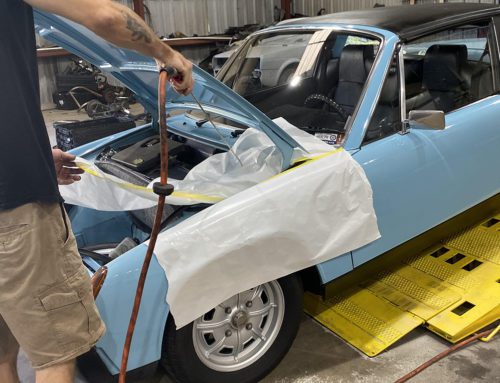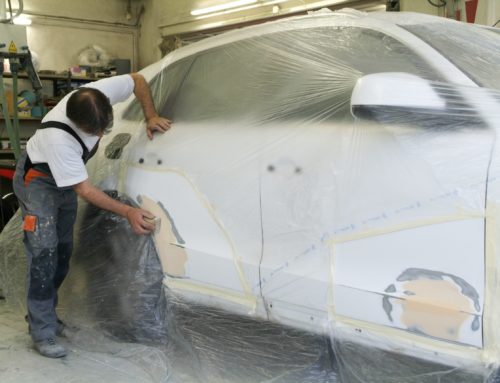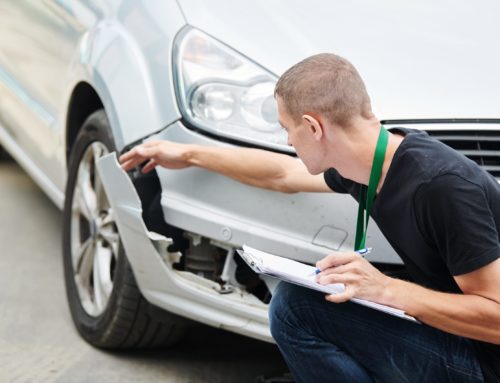As a classic car owner, you know that your vehicle is a true work of art. Not only is it a beautiful piece of machinery, but it’s also a source of pride and joy. You take great care in maintaining your car and ensuring that it runs smoothly and looks its best.
However, owning a classic European car comes with its own set of challenges. These cars are often delicate and require special care to keep them running properly.
This guide will provide you with all the information you need to know about classic European car maintenance.
The Benefits of Regular Maintenance for Your Classic European Car
Owning a classic European car is a unique experience. These cars are not only beautiful and luxurious but they’re also built to last. However, like any vehicle, they require regular maintenance to stay in good condition. Here are some of the benefits of keeping up with maintenance on your classic European car:
First, regular maintenance will help to keep your car running smoothly. By regularly checking and servicing your car, you can catch small problems before they become big ones. This will save you money in the long run, as well as keep your car running at its best. Second, regular maintenance will help to preserve the value of your car. Classic European cars are investments, and keeping up with maintenance will ensure that your car holds its value over time. Finally, regular maintenance is simply the best way to enjoy your classic European car. By keeping it in top condition, you can enjoy it for years to come.
So if you own a classic European car, be sure to keep up with its maintenance. It’s the best way to enjoy all that these amazing cars have to offer.
The Importance of Using the Right Parts and Fluids for Your Classic European Car
Any classic car enthusiast will tell you that one of the most important things you can do to maintain your vehicle is to use the right parts and fluids. Not only will this help keep your car running smoothly, but it will also help to preserve its value. While it may be tempting to skimp on quality to save money, doing so can end up costing you more in the long run. With that in mind, let’s take a look at why using the right parts and fluids is so important for classic European cars.
First and foremost, using high-quality parts will help ensure that your car runs properly. Inferior parts are more likely to break down or wear out quickly, leading to costly repairs. When it comes to fluids, using the wrong type can damage your car’s engine. For example, using conventional oil in a classic European car that requires synthetic oil can cause serious problems.
In addition to preventing expensive repairs, using the right parts and fluids can also help you avoid potential accidents. Using inferior brake pads, for instance, can increase your stopping distance and lead to a collision. Similarly, using the wrong type of oil can cause your engine to seize up, leading to a dangerous breakdown.
To sum things up, it’s important to use high-quality parts and fluids in your classic European car. Not only will this help keep your car running properly, but it will also prevent costly repairs and accidents.
How to Winterize your Classic European Car
As any classic car enthusiast knows, winter can be tough on vintage vehicles. The cold weather can cause the engine to seize, the battery to die, and the tires to crack. To protect your classic car from the winter elements, it’s important to take some time to winterize it before the season begins. First, make sure the engine is in good working order by checking the oil level and replacing any worn-out parts. Next, change out the tires for a set of winter tires that are designed to grip the road in icy conditions. Finally, add a layer of protection against salt and other corrosive materials by applying a coat of rust-proof paint to the body of the car. By taking these steps, you’ll help ensure that your classic car stays in good condition all winter long.
Spring Maintenance Tips for Your Classic European Car
As the weather warms up and the days get longer, it’s a good time to start thinking about spring maintenance for your classic European car. Here are a few tips to help you keep your car in top condition:
1. Check the engine oil level and quality. If it’s been more than a year since your last oil change, or if the oil looks dark and dirty, it’s time for a change. Be sure to use the correct grade and type of oil recommended by your car’s manufacturer.
2. Check all fluids levels, including coolant, brake fluid, and transmission fluid. Top off any that are low, and flush and refill the coolant if it’s more than two years old.
3. Inspect all belts and hoses for cracks or wear. Replace any that show signs of wear or damage.
4. Have the brakes inspected by a qualified mechanic. This is especially important if your car has not been driven much over the winter months.
5. Check the tires for tread wear and pressure. If they’re getting low on tread, it’s time to replace them. Also, be sure to check the spare tire and make sure it is properly inflated.
By following these tips, you’ll help ensure that your classic European car is ready for the spring driving season.
Summer Driving Tips for Your Classic European Car
For most of us, summer is the time to hit the open road and enjoy some well-deserved time off. However, if you own a classic European car, you’ll need to take a few extra precautions to ensure that your vehicle stays in tip-top shape. Here are a few summer driving tips to keep in mind:
First, avoid long periods of idling in hot weather. This can put a strain on your engine and cause it to overheat. If you must idle for more than a minute or two, turn off the air conditioning and roll down the windows to help keep the engine cool.
Second, make sure your tires are properly inflated. Hot weather can cause tires to lose pressure, which can lead to decreased fuel efficiency and increased wear and tear. Inspect your tires regularly and inflate them as needed.
Third, watch out for potholes and other road hazards. Potholes can damage your suspension and alignment, so it’s important to avoid them if at all possible. If you do hit a pothole, have your vehicle inspected by a qualified mechanic as soon as possible.
By following these tips, you can help ensure that your classic European car stays in good condition all summer long.
Fall Maintenance Tips for Your Classic European Car
As the leaves begin to change color and the days grow shorter, it’s important to take some time to prepare your classic European car for the changing seasons. Here are a few fall maintenance tips to keep in mind:
1. Check your tires. Colder temperatures can cause tires to lose pressure, so it’s important to check them regularly throughout the fall. Additionally, make sure that your tires have enough tread to provide adequate traction on wet roads.
2. Get your car serviced. Fall is a good time to get your car’s oil changed and perform any other routine maintenance tasks. This will help to keep your car running smoothly and prevent problems down the road.
3. Inspect your wipers. Wet weather can take a toll on your windshield wipers, so it’s important to inspect them regularly and replace them if necessary.
4. Protect your paint job. Colder temperatures can cause paint to crack and peel, so it’s important to wax your car regularly throughout the fall. This will help to protect your paint job and keep your car looking its best.
By following these pointers, you can help to ensure that your classic European car stays safe and reliable for the coming winter.
These simple tips can help to ensure that your classic European car stays safe and reliable all year long. By taking a few extra precautions, you can help to keep your car in good condition and avoid costly repairs down the road.






